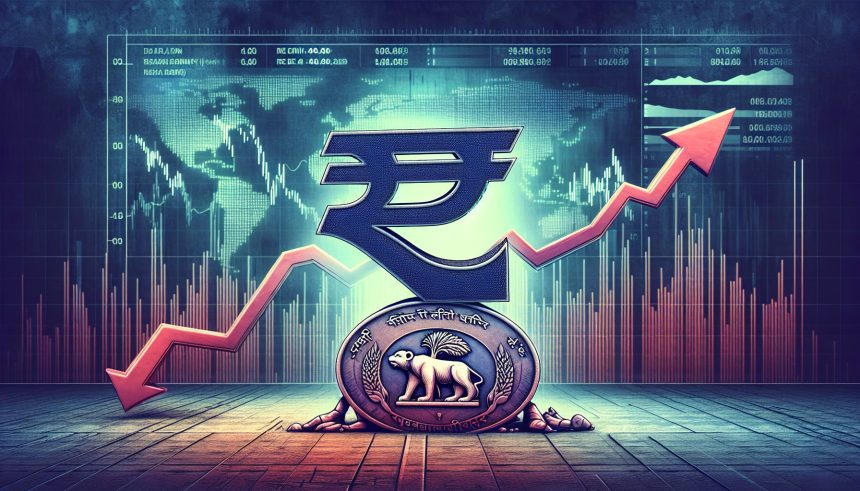The Reserve Bank of India (RBI) is taking concerted steps to control a significant devaluation of the Indian rupee. This intervention, a response to global economic fluctuations, aims to stabilize the foreign exchange market and limit volatility. The endeavor is to safeguard against abrupt changes affecting the rupee’s value and to maintain economic growth.
On the last Friday the rupee witnessed a fall against the U.S. dollar due to end-of-fiscal-year payments by companies, dipping to a low of 83.70 per dollar. This dip combined with global market instability and inflation worries contributed to the rupee’s loss. This depreciation, however, is expected to recover gradually once the fiscal obligations are met.
Anindya Banerjee, Vice President of Kotak Securities, attributes this decline to technical movements and warns of market volatility if RBI does not intervene. While highlighting the influence of a strengthening dollar and rising oil prices on India’s currency standing, Banerjee stressed the need for proactive RBI measures to maintain stability and prevent further rupee depreciation.
The brief pause in the onshore foreign exchange market due to national holidays saw interesting market behavior. With the rising oil prices and strengthening of the dollar, rupee depreciation was further driven. Analysts suggest that heightened imports and outflows from the domestic equity market may be contributing to the weakening rupee.
RBI actions to counter rupee devaluation
Although some stabilization is expected post the holidays, caution is advised due to ongoing trade and geopolitical concerns.
The rupee also experienced pressures from a year-end dollar shortage, RBI’s $5 billion FX swap purchase, and banks closing their open dollar positions, causing a further decrease in its value. Facing this critical situation, a turbulent start is predicted for the Indian currency in the coming year. Measures from RBI to stabilize the rupee’s volatility are being eagerly awaited by the financial sector. Nevertheless, some economists remain hopeful about the rupee’s long-term rebound, provided strategic policies are implemented by the government and RBI.
Despite the rupee’s sharp drop, traders are hoping for a recovery. It is widely speculated that the rupee will begin trading at above 83.50 a U.S. dollar on Tuesday due to anticipated protective measures from the RBI. While significant challenges loom because of international trade uncertainties and a continuously rising U.S. dollar, the RBI’s commitment to maintaining exchange rate stability provides hope for the rupee’s recovery. Investors and traders are, therefore, encouraged to monitor the situation closely.







